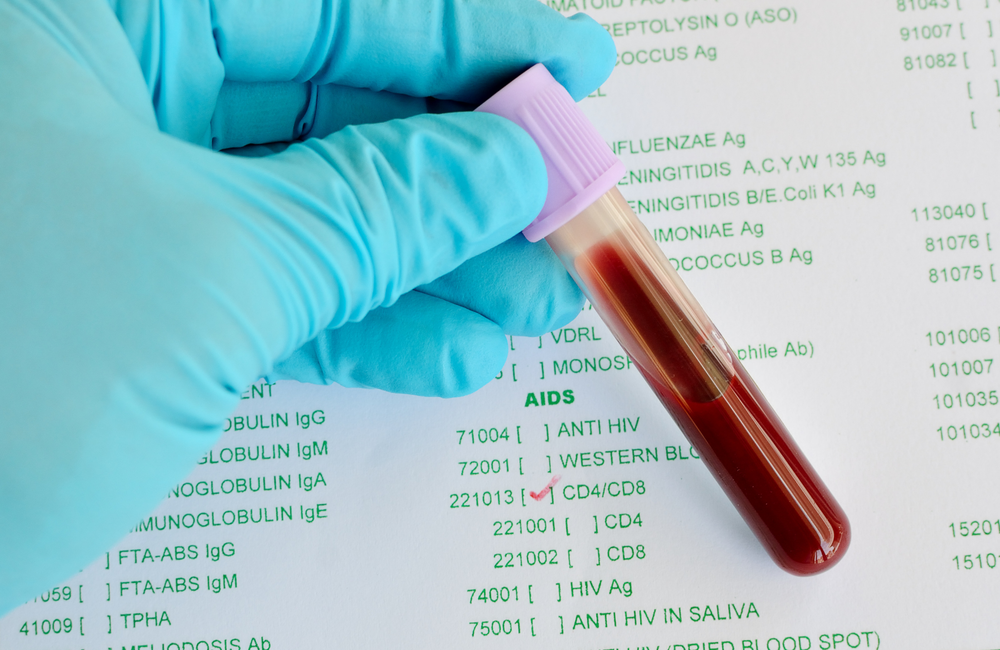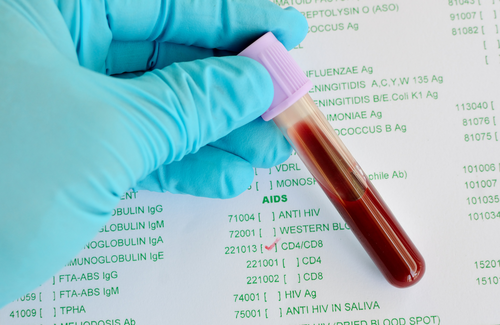
Monitoring of CD4/CD8 ratios should not be abandoned as HIV treatment programmes switch to streamlined monitoring, researchers from the University of Wisconsin argue in the journal AIDS.
Highlighting recently published research that shows the value of CD4/CD8 ratios for predicting who is at greater risk of cancer and weak vaccine responses, they say that the CD4/CD8 ratio remains an important biomarker for guiding individualised care in people with HIV.
HIV causes changes in the numbers of two types of T-lymphocytes, CD4 cells and CD8 cells. HIV infects and kills CD4 cells. CD8 cells proliferate in response to HIV, seeking out cells infected with HIV and killing them.
As CD4 numbers decline, the ratio of CD4 cells to CD8 cells will decline too, from a normal range between 1 and 3 to below 1. When the CD4/CD8 ratio falls below 1, it means there is more than one CD8 cell for every CD4 cell in a millilitre of blood. In advanced HIV, when the CD4 count falls below 200, the CD4/CD8 ratio may fall below 0.3.
When people begin taking antiretroviral treatment, their CD4 counts begin to rise. In the majority of people who start treatment with advanced HIV, the CD4 count returns to a normal level (above 500) after several years. The CD4/CD8 ratio may also return to normal, but it can take a long time and not everyone who experiences a healthy CD4 count increase will see the return of their CD4/CD8 ratio to a normal level. For example, an Italian research group reported that after five years on treatment, there was a 29% chance that people who started treatment with a CD4/CD8 ratio below 0.4 would experience normalisation to a ratio above 1.
People who start treatment earlier, with CD4 counts above 350, are more likely to experience normalisation. But a substantial proportion of people with HIV are still diagnosed late, with low CD4 counts.
In the early years of the AIDS epidemic, before antiretroviral treatment became available, the CD4/CD8 ratio was measured routinely. But in recent years, as HIV monitoring has been streamlined, the test has fallen into disuse.
Yet several recent studies have shown that in people taking antiretroviral treatment, the CD4/CD8 ratio was a useful indicator of which people had a higher risk of experiencing serious health conditions after starting antiretroviral treatment.
A Spanish research group reported last year that in a large cohort of people with HIV who started treatment between 2004 and 2014, a CD4/CD8 ratio of 0.3 or below two years after starting treatment predicted an increased risk of a serious non-AIDS event such as cardiovascular disease, a non-AIDS-defining cancer or death over the next five years. In people with CD4 counts above 500, a CD4/CD8 ratio below 0.4 was associated with an increased risk of serious non-AIDS events.
"The test can be used to identify people in greater need of screening for lung cancer and anal cancer."
They concluded that in people with CD4 counts below 500, the main factor driving the risk was the CD4 count. But in people with CD4 counts above 500, it was the raised CD8 count – and what that suggests about immune activation or immunosenescence – that drove the risk. Immunosenescent CD8 cells are memory CD8 cells that have become less competent at responding to antigens, leaving them less able to respond to viruses or cancers.
A large US study of people with HIV found that a low CD4/CD8 ratio was associated with an increased risk of developing any form of cancer in future follow-up periods of between six months and two years. Several other studies have shown that a low CD4/CD8 ratio was associated with lung cancer or anal cancer in people with HIV, suggesting that the test can be used to identify people in greater need of screening for these conditions.
In a review published in Clinical Infectious Diseases last year, a Spanish research group also drew attention to the potential uses of the CD4/CD8 ratio in identifying people who might be prioritised for cancer screening. They also noted that clinical trials and cohort studies show people taking integrase inhibitors consistently experience faster normalisation of the CD4/CD8 ratio.
The CD4/CD8 ratio also predicts the response to some vaccines, notably hepatitis B, yellow fever and the Pfizer SARS-CoV-2 vaccine. A low CD4/CD8 ratio has also been shown to increase the risk of acquiring bacterial infections and tuberculosis in people taking antiretroviral treatment.
Almost all of these studies were carried out in people with HIV in high-income countries. Research is needed on the predictive value of the CD4/CD8 ratio in other settings, say the University of Wisconsin researchers.
They say that the CD4/CD8 ratio is a widely available test that adds little to the cost of monitoring but may enable greater precision in targeting further screening. But they note increasing divergence between European AIDS Clinical Society guidelines, which note the value of the CD4/CD8 ratio, and other national and international guidelines, which either ignore the test or say it is unnecessary in people on antiretroviral treatment. Even the EACS guidelines say the test is optional.
The British HIV Association’s 2019 monitoring guidelines say that CD4 count monitoring should be considered optional for people who are virally suppressed once the CD4 count has risen above 350 on treatment and stayed above that level for at least a year – unless treatment failure occurs. The guidelines do not mention CD8 count monitoring in any circumstances.
In their review of the uses of the CD4/CD8 ratio, the Spanish research group suggested that due to the slow pace of change in the CD4/CD8 ratio, measuring it once a year would be sufficient. For people who start treatment early, at high CD4 counts, this may not be necessary, but for the substantial minority of people with HIV who start treatment with a low CD4 count, some researchers have now concluded that monitoring the CD4/CD8 ratio can provide valuable information that will enable these patients to receive the best care.
Gergen M et al. Monitoring immune recovery on HIV therapy: critical, helpful or a waste of money in the current era? AIDS, published online, 2 February 2024.
Ron R et al. CD4/CD8 ratio during human immunodeficiency virus treatment: time for routine monitoring? Clinical Infectious Diseases, 76 (9): 1688-96, 2023.

